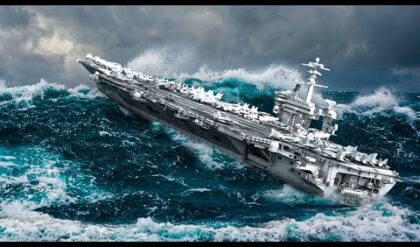When a pilot misses the landing on a US aircraft carrier, a carefully choreographed and high-stakes series of events is set into motion.Landing on an aircraft carrier is an incredibly demanding and precise task, often referred to as a “trap” or “arrested landing.” If a pilot fails to make a successful landing, several key actions take place:
-
Wave-Off: The Landing Signal Officer (LSO) stationed on the carrier’s deck closely monitors the approaching aircraft. If it becomes apparent that the pilot is not in the correct position or on the correct glide path to make a safe landing, the LSO will wave off the pilot by signaling with their paddles. This is a critical decision aimed at preventing a potentially catastrophic accident.
Go-Around: In response to the wave-off signal, the pilot must quickly apply full throttle and execute a go-around. This involves climbing away from the carrier deck and preparing for another landing attempt.
Bolter: In some cases, if the pilot is unable to go around due to technical issues or a missed approach, they may experience a “bolter.” A bolter occurs when the aircraft’s tailhook fails to engage the arresting wires on the carrier deck, causing the aircraft to continue its flight. The pilot must then attempt another landing.
Emergency Diversion: If a successful landing cannot be achieved after multiple attempts, the aircraft may not have enough fuel to safely continue trying. In such cases, the pilot may be directed to divert to an alternative landing site, such as a shore-based airfield or another nearby ship. This is considered a last resort to ensure the safety of the pilot and the aircraft.
Review and Debrief: After the aircraft has safely landed, whether on the carrier or at an alternative location, a thorough review and debriefing take place. This involves analyzing what went wrong during the previous landing attempts, addressing any issues or mistakes, and preparing for future attempts.

Missing a landing on a US aircraft carrier is a high-stress situation for both the pilot and the carrier crew.
The strict training and protocols in place are designed to minimize the risks associated with such incidents and ensure the safety of all personnel involved in naval aviation operations.
It is a testament to the skill and professionalism of both pilots and deck crew that these challenging situations are managed with precision and safety in mind.





